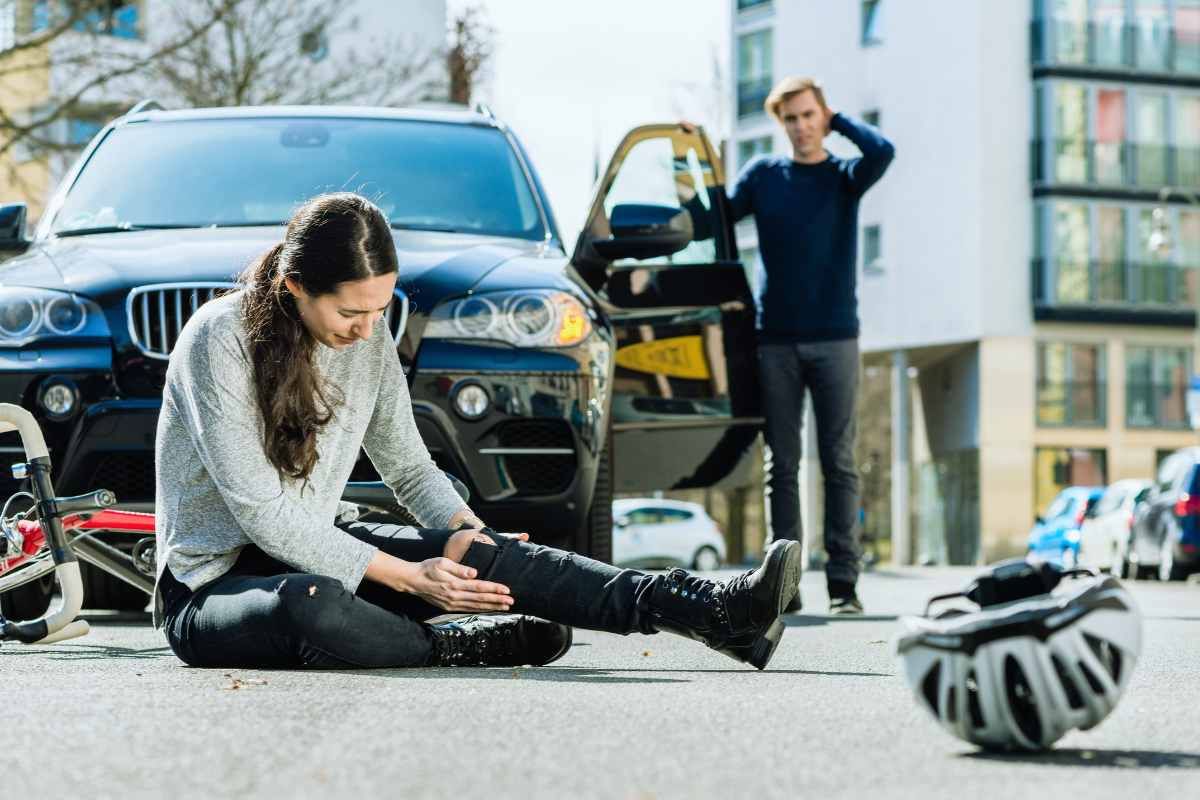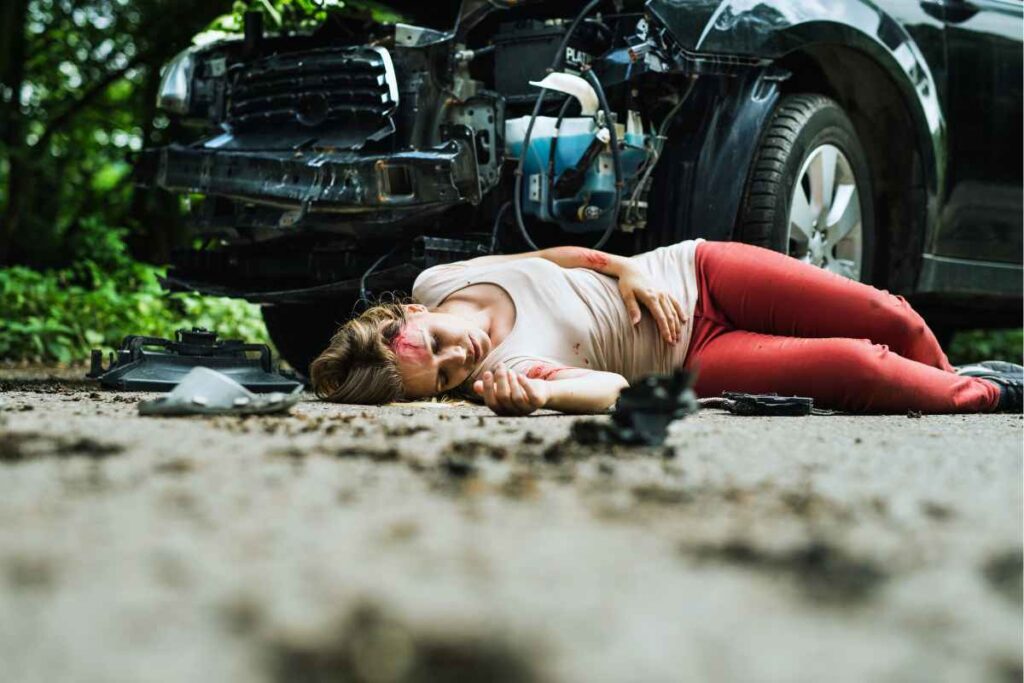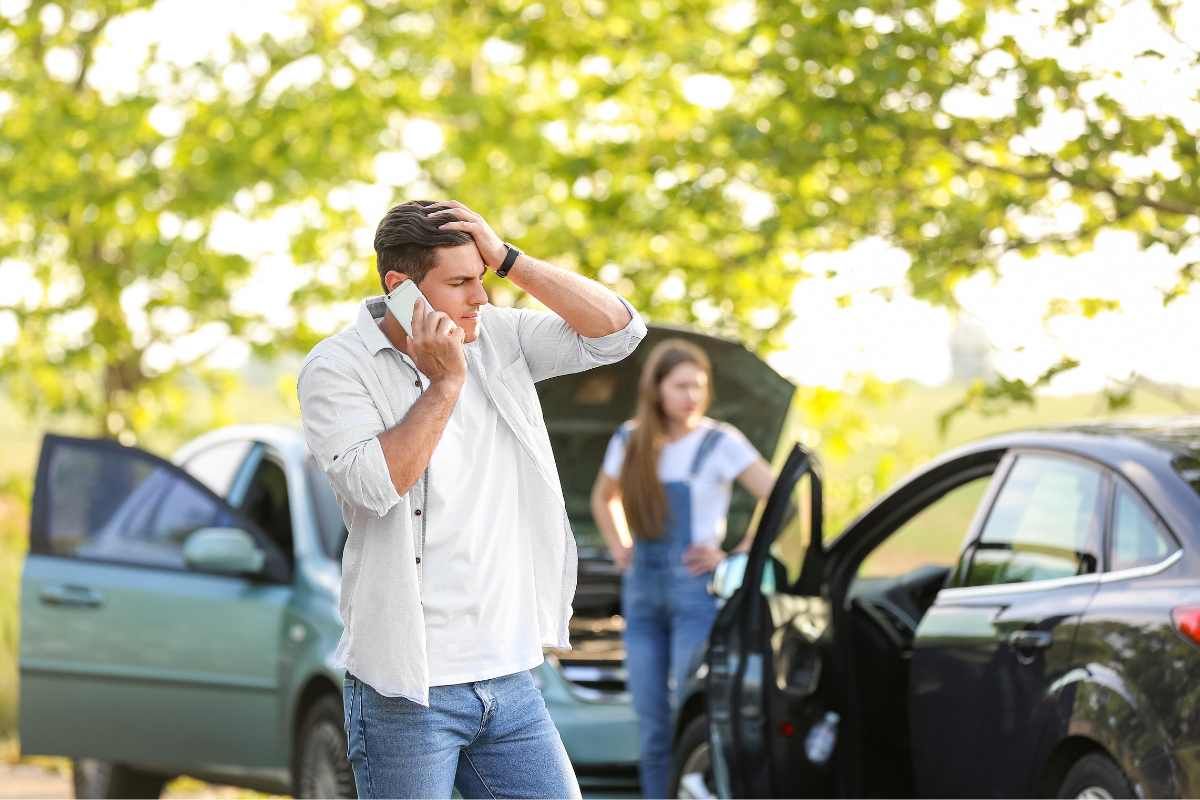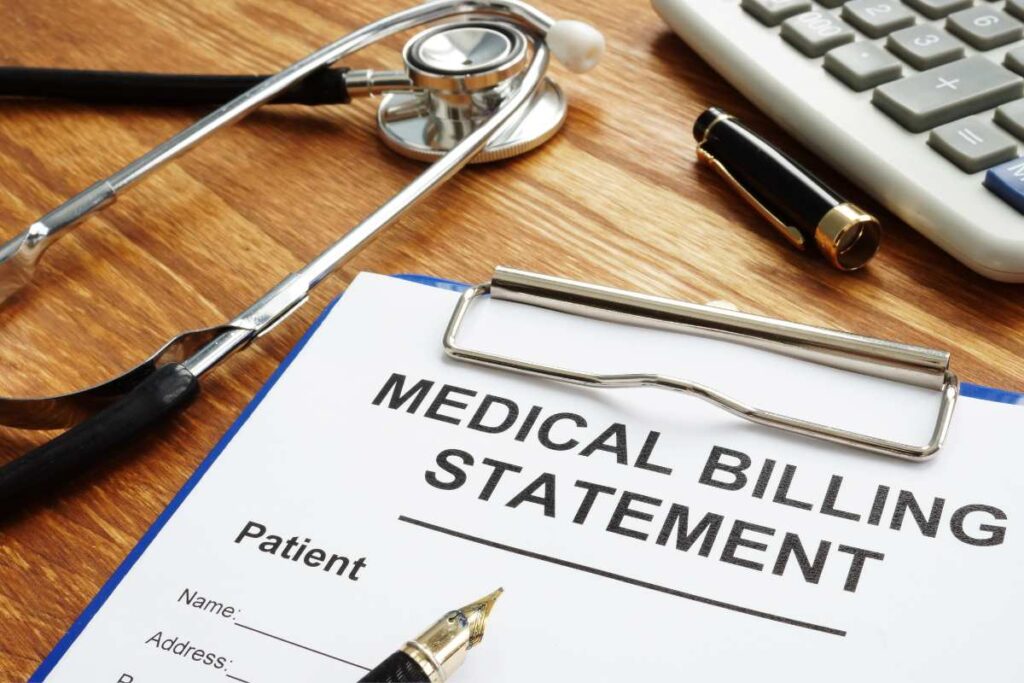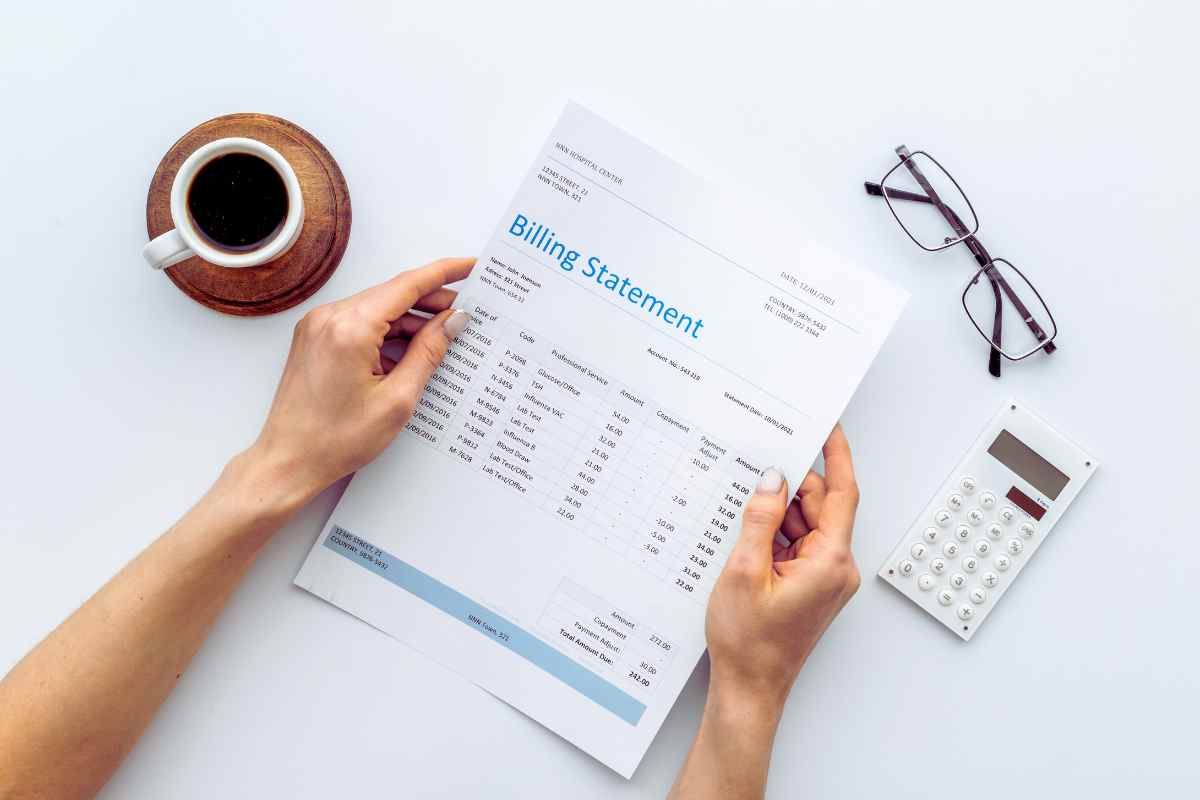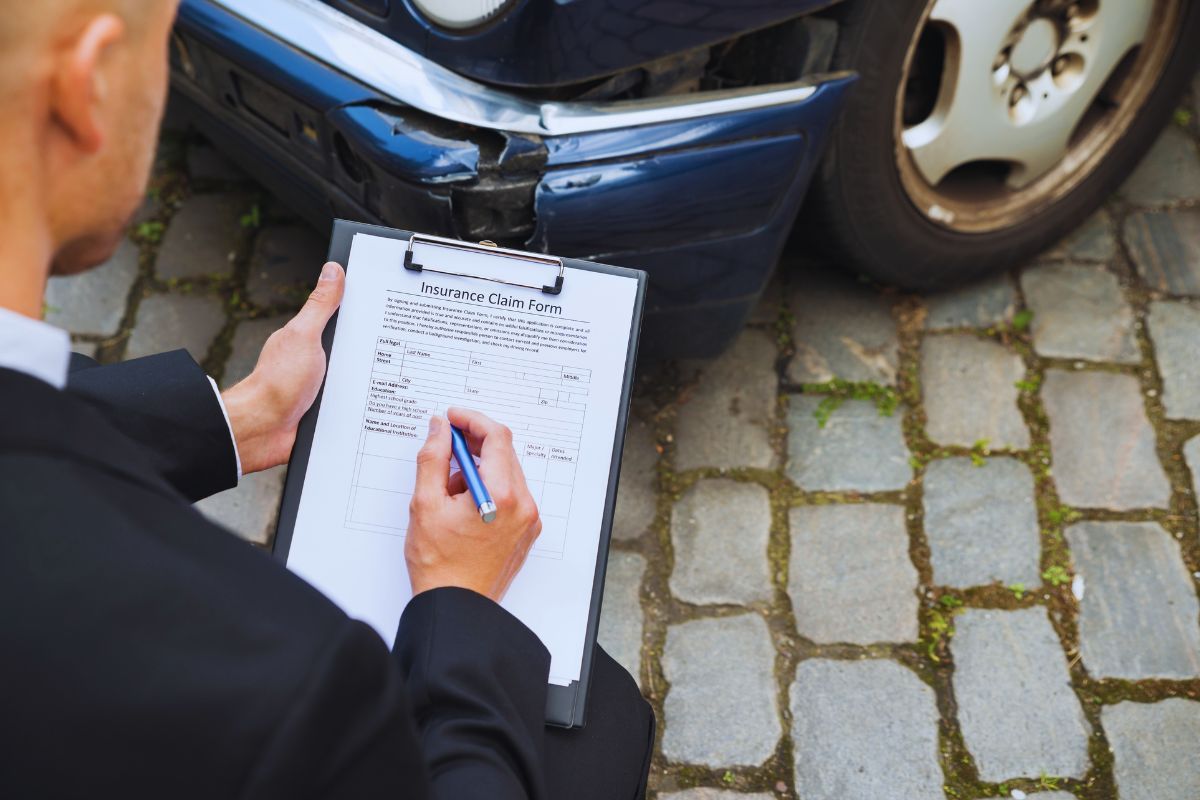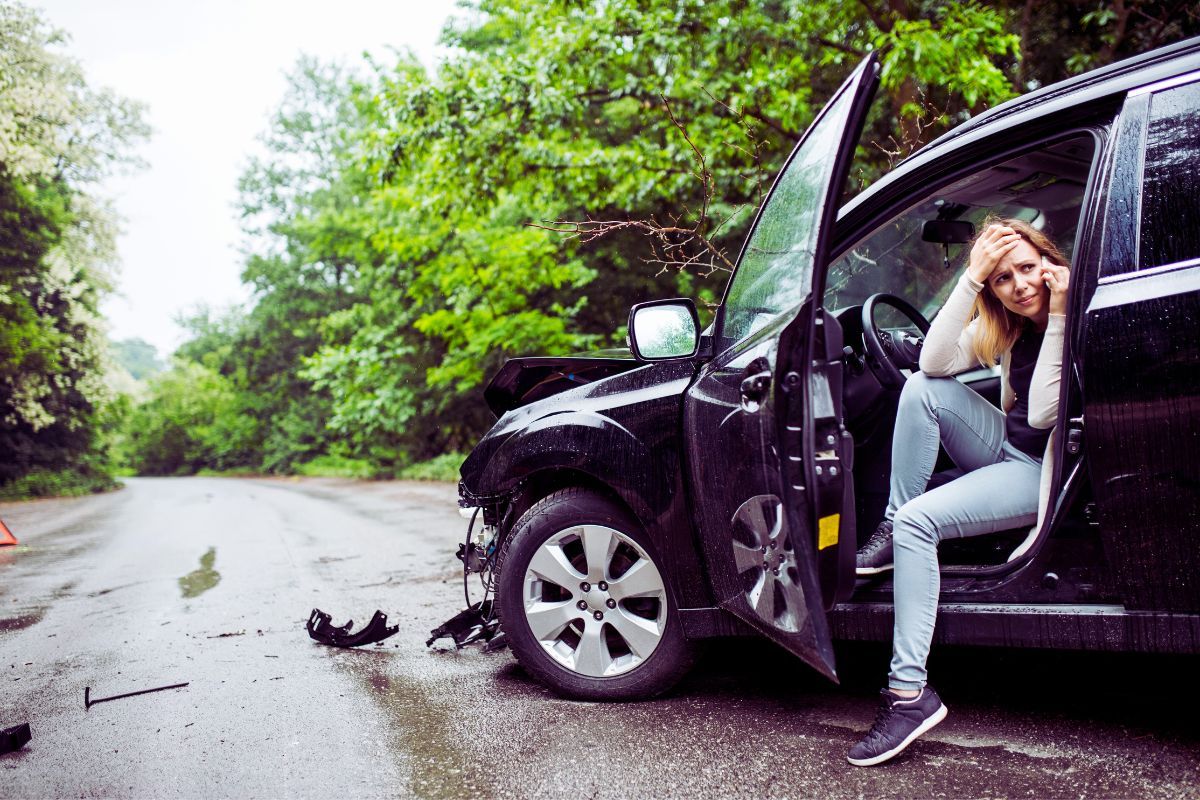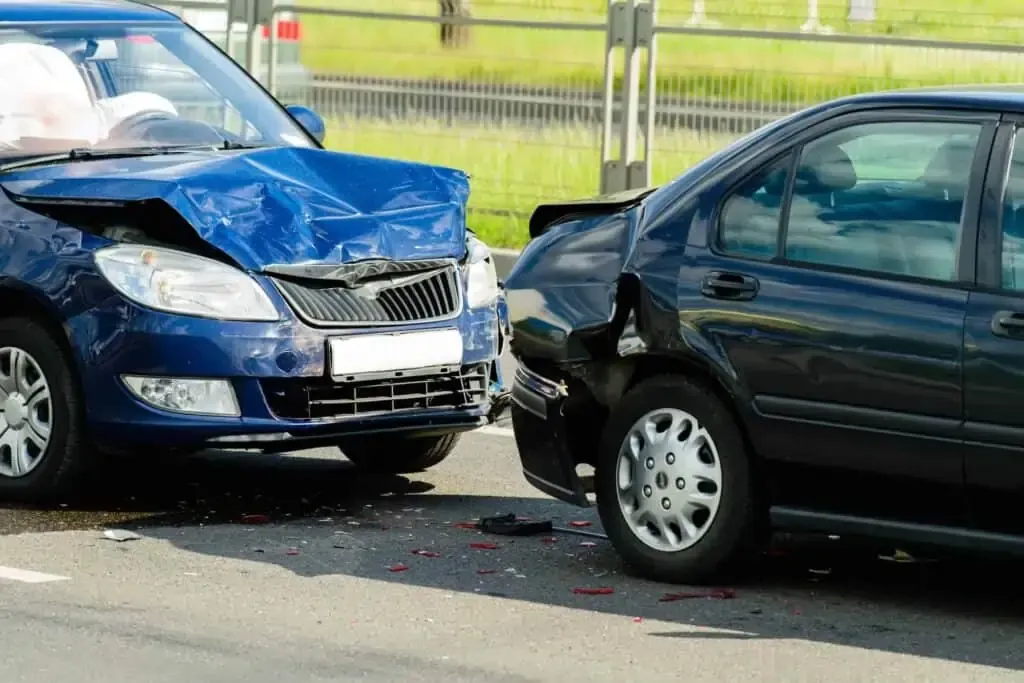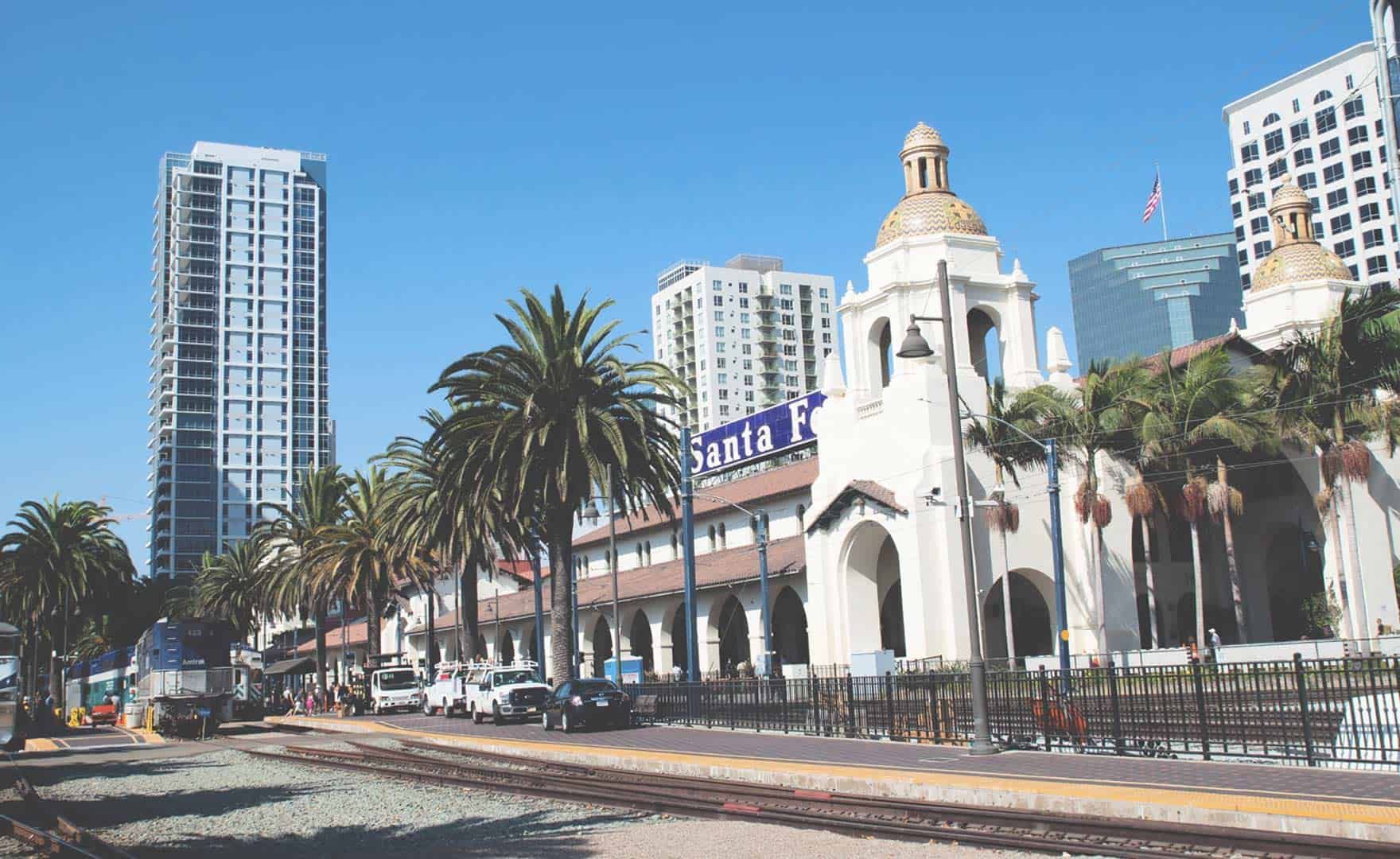How Much Evidence Do You Need to Win a Personal Injury Claim in San Diego?
If you’ve ever wondered what really makes or breaks a personal injury case, here’s the simple truth: it all comes down to evidence. In California, the standard is called “preponderance of the evidence,” which means you only need to show that it’s more likely than not that the other party caused your injury. It’s not about proving your case beyond all doubt, but it does require clear, consistent proof that holds up under scrutiny.
Think of it this way the stronger and better organized your evidence, the more convincing your story becomes. That evidence can take many forms: police reports, photos and videos, medical records, or even the credibility of your own testimony. Each piece builds on the next until your claim moves from being just plausible to truly provable.
In this guide, we’ll walk through what “enough evidence” actually looks like in practice. From the first steps you should take after an accident, to the types of medical and liability records that carry the most weight, to how San Diego’s local courts and timelines shape outcomes you’ll see exactly which kinds of proof matter most. By the end, you’ll understand how to put together a case that doesn’t just survive, but stands strong when challenged.
Executive Summary: What “Enough Evidence” Means in California
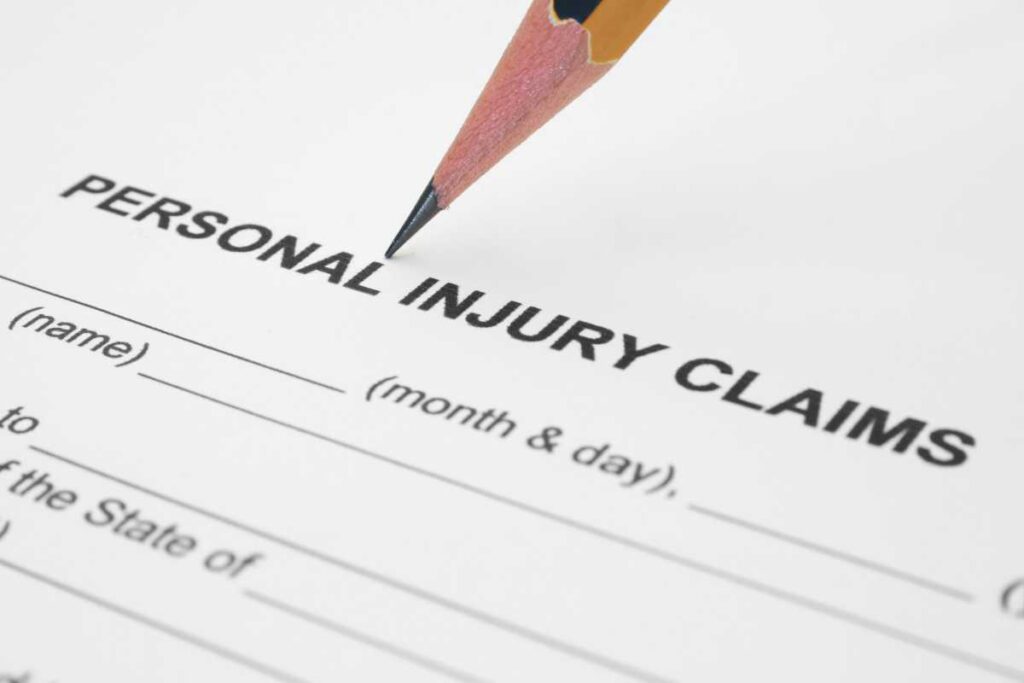
In California civil courts, the question is never about absolute certainty but about tipping the scale. The burden of proof is preponderance of the evidence meaning it must be more likely than not that the other party’s actions caused your injury. This is a lower threshold than criminal cases, but it still demands clarity and consistency.
Four elements form the backbone of a strong claim: liability, causation, damages, and credibility. Liability asks who was at fault. Working with an experienced personal injury lawyer San Diego helps ensure these elements are documented correctly from the start.
Causation connects that fault directly to the injuries you suffered. Damages establish the financial and personal impact, from medical bills to lost wages. Credibility ties everything together, showing that your account and your supporting witnesses can be trusted.
Put simply, enough evidence is not about volume but about alignment. When these elements work together in a coherent, documented way, a claim shifts from plausible to provable. The following sections will explain how to build that foundation step by step starting with what to do in the critical first 72 hours after an accident.
Quick Evidence Insights for San Diego Claimants
Before diving into the details, it helps to step back and see the bigger picture. Building a personal injury claim isn’t about collecting endless paperwork it’s about making sure the right pieces of proof line up in a way that convinces insurers or a jury. Here are the essentials to keep in mind:
- Liability matters most: Police reports, photos, and witness statements are the backbone of proving fault.
- Medical records link it together: Early, consistent treatment shows that your injuries came directly from the crash.
- Damages must be measurable: Bills, pay stubs, and expert opinions turn suffering into numbers the court can use.
- Credibility carries weight: Your testimony and consistency across records often decide how evidence is viewed.
- Deadlines can’t be missed: California’s statute of limitations and administrative deadlines can end a case before it begins.
Keeping these pillars in mind as you read on will make it easier to see how each type of evidence fits into a strong, well-documented claim.
First 72 Hours: Evidence That Sets the Case Up Right
The hours right after an accident often make or break a personal injury case. Small steps — or missed steps can have major consequences for the strength of your claim. Acting quickly helps preserve proof before it disappears and ensures your story is supported by reliable documentation.
What should you do at the scene in San Diego?
Yes, documenting and reporting immediately is one of the most important things you can do. Once safety is secured, call 911 so law enforcement like the San Diego Police Department (SDPD) or California Highway Patrol (CHP) can generate an official accident report. Exchange information with the other driver, but keep the conversation limited to the facts names, contact details, and insurance information.
Take as many photos and videos as possible. Capture vehicle damage, skid marks, traffic signals, and the wider scene from multiple angles. In San Diego, many serious collisions occur along major corridors like I-5, I-8, I-15, or SR-163. Including location context in your evidence can strengthen your case later. Don’t forget to get witness contact information, since independent statements can carry significant weight.
How do you secure third-party video quickly?
Businesses, homeowners, or transit agencies may have camera footage, but most systems overwrite recordings within days. That’s why preservation letters formal written requests to hold video evidence are crucial. If you or your attorney act quickly, you may secure dashcam files, store surveillance, or even Metropolitan Transit System (MTS) bus camera footage before it’s lost. Saving your own dashcam data right away is equally important.
How soon should you get medical care?
Yes, you should seek medical attention the same day, even if your injuries feel minor. Delayed symptoms are common with injuries like concussions or whiplash. A same-day evaluation not only protects your health but creates an early medical record that links your injuries to the crash. In San Diego, hospitals like Scripps Mercy, UC San Diego Health, and Sharp have trauma centers familiar with accident-related care, which adds credibility to your records.
Consistency is critical. Following up with referrals, attending physical therapy, and keeping documentation organized shows both insurers and courts that your injuries are genuine and ongoing.
Should you talk to insurers right away?
No, beyond giving basic notice of the accident, you should avoid detailed conversations with insurers in the first few days. Recorded statements or broad medical authorizations can easily be used against you. It’s best to wait until you’ve spoken with a car accident lawyer San Diego before sharing details about your injuries, treatment, or the crash itself.
This helps prevent inconsistencies that could undermine your credibility later.
Liability Proof: Showing Who Was At Fault
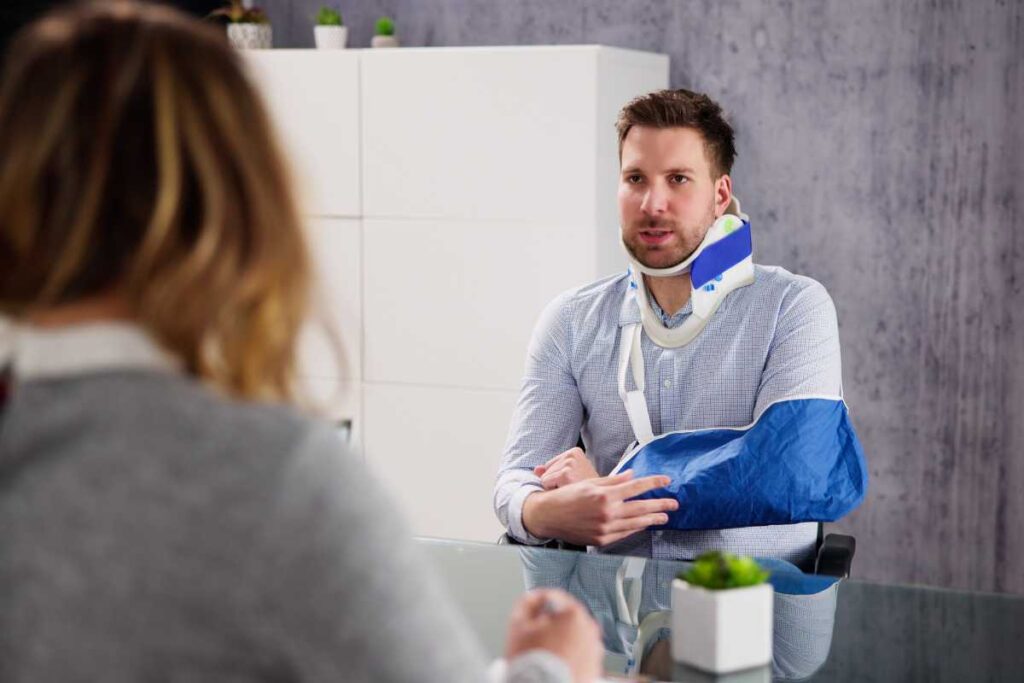
Proving fault is rarely about one single document. Fault is established through layers of evidence that, when combined, create a convincing narrative. Each type of proof plays a role, but together they give adjusters and juries a complete picture of how the accident unfolded.
What evidence carries the most weight for fault?
The most persuasive fault evidence is usually visual. Clear photos and videos showing the positions of vehicles, skid marks, traffic signals, and the broader scene often outweigh written descriptions. Police reports and any citations issued at the scene add authority, especially when they confirm violations of traffic law.
Eyewitness statements can support or challenge accounts, so getting accurate contact details at the scene is critical. Physical evidence such as debris fields, impact points, and skid lengths provide context that accident reconstruction experts can later expand upon.
In many modern vehicles, event data recorders (often called “black boxes”) capture speed, braking, and seatbelt use in the seconds before a crash. Phone records may also come into play if distracted driving is suspected. When these pieces are combined, they create a layered account of liability that is hard to dismiss.
What if the police report is wrong?
Yes, you can challenge or supplement a police report if it contains errors. This may involve submitting a correction request with diagrams, photographs, or additional witness statements. In some cases, attorneys use accident reconstruction experts to demonstrate why the original report was incomplete or inaccurate. While reports carry weight, they are not the final word — courts will look at all admissible evidence when deciding fault.
How does comparative negligence affect recovery?
Yes, you can still recover compensation even if you were partly at fault. California follows a pure comparative negligence rule. This means your compensation is reduced by your percentage of fault, but you are never completely barred from recovery. For example, if a jury decides your damages are worth $100,000 but also finds you 25 percent responsible, you could still receive $75,000.
This rule often comes into play in San Diego traffic collisions where multiple drivers share blame, such as chain-reaction crashes on I-805 or left-turn accidents on El Cajon Boulevard. Comparative negligence highlights the importance of building strong liability proof so that your percentage of fault is minimized.
Does fault change with rideshare, commercial, or government vehicles?
Yes, the type of vehicle involved can change how liability is pursued. If a rideshare driver for Uber or Lyft caused the accident, their commercial policy may apply once the app was active, which is why San Diego rideshare accident attorneys often play a critical role in navigating these claims. For crashes involving commercial trucks, federal and state regulations add layers of responsibility and require careful review of driver logs and maintenance records.
When government vehicles or unsafe roadway conditions are involved, the process becomes even more complex. California’s Government Claims Act requires you to file an administrative claim within six months before suing a public entity. In San Diego, this can involve city-owned buses, county vehicles, or poorly maintained intersections. Missing that deadline can bar your claim entirely, which is why experienced legal guidance is essential in these scenarios.
Injury Proof: Making Medical Evidence Court-Ready
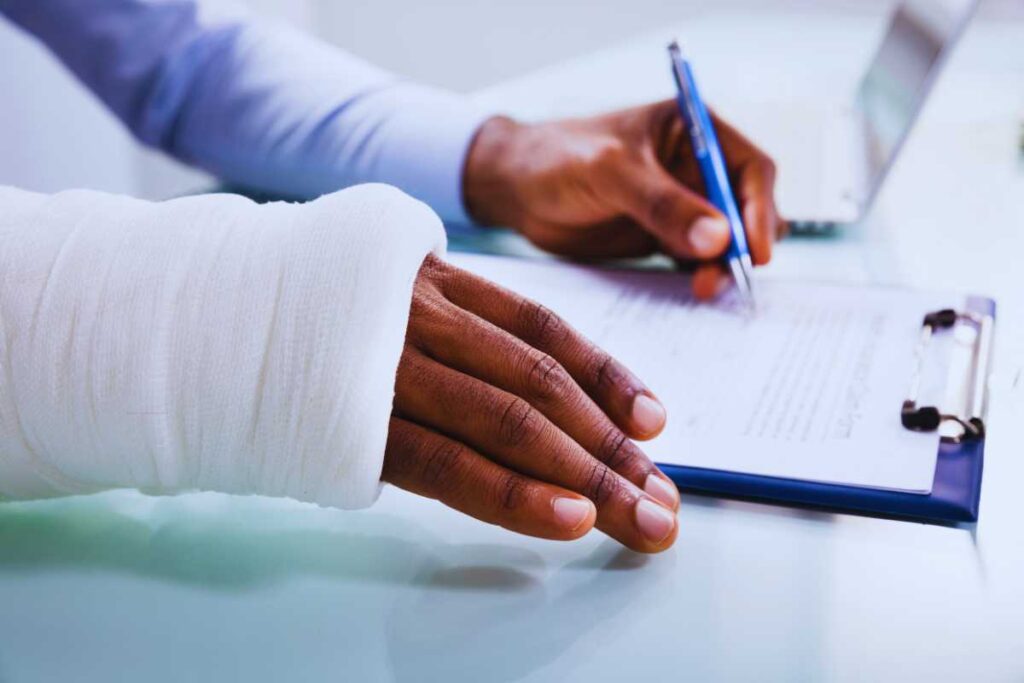
Even when liability is clear, a personal injury case cannot succeed without solid medical documentation. Complaints of pain or discomfort must be tied to clinical findings that show the injury was caused by the crash. Courts and insurers alike look for objective proof that injuries are real, serious, and directly connected to the accident.
Which medical records actually move the needle?
Not all records carry the same weight. Emergency department notes are often the most persuasive because they capture symptoms immediately after the crash. Imaging such as X-rays, MRIs, or CT scans provide visual confirmation of internal damage. Specialist reports and treatment plans from orthopedists, neurologists, or physical therapists add credibility by showing a medical basis for ongoing care.
Work restriction notes and prognosis reports are also critical. They help demonstrate how injuries affect daily life and earning ability. The key is consistency — treatment records that align across providers strengthen credibility, while gaps in care or conflicting accounts can weaken your case.
How do you prove causation when symptoms appear later?
Yes, you can still link injuries to an accident even if they show up days later. Some injuries, like whiplash or concussions, don’t present immediately. To prove causation, doctors often rely on the mechanism of injury, patient history, and consistency of reported symptoms. For example, if you report neck pain within days of a rear-end crash and an MRI later shows a herniated disc, the timeline supports causation — especially in cases involving concussions or TBIs where guidance from a San Diego brain injury lawyer can help connect the medical and legal proof.
Being upfront about prior medical history also helps. Courts and insurers scrutinize whether symptoms could be from pre-existing conditions, so disclosing past issues allows providers to distinguish new injuries from old ones. For example,
What about pain, suffering, and life impact?
Yes, personal losses must also be documented carefully. Pain and suffering damages are harder to quantify but can be supported with testimony and daily-life records. A personal journal describing sleep problems, mobility limits, or emotional struggles builds a strong case. Statements from family members, friends, or therapists add further context.
For example, if an accident prevents you from participating in recreational soccer leagues at Balboa Park or disrupts your ability to care for children, those lifestyle changes demonstrate the broader human cost of the injury.
Example exhibits to include
- Timeline of medical care showing progression of treatment
- Medication log that records prescriptions and dosages
- Activity limitations chart that tracks what tasks you could do before versus after the crash
Damages Proof: Turning Costs and Losses Into Numbers
Medical evidence proves the existence of an injury, but damages show its true cost. Damages are the financial and human losses that result from an accident the numbers that courts and insurers use to calculate compensation. Strong damages proof transforms abstract suffering into measurable impact.
How are medical bills calculated in California?
Yes, past medical bills in California are based on what was actually paid or incurred, not the sticker price. The California Supreme Court’s decision in Howell v. Hamilton Meats makes this clear: only the amounts accepted by providers or paid by insurers count as recoverable damages. This prevents inflated billing from skewing settlements but also means careful review of provider statements is essential.
For San Diego claimants, this often involves coordinating records from large hospital systems like Scripps, UC San Diego, or Sharp, along with private specialists. Organizing bills and confirming payments ensures that your claimed damages reflect real, admissible amounts.
How do you prove wage loss and reduced earning capacity?
Yes, financial documentation is critical to proving lost income. For employees, pay stubs, W-2s, and employer letters serve as the primary proof. For self-employed individuals, tax returns, invoices, and client contracts demonstrate earnings history. Vocational experts may also provide testimony about reduced earning capacity, especially when injuries prevent a return to the same line of work.
For example, a construction worker injured on I-15 who can no longer perform heavy lifting might present orthopedic reports alongside testimony from a vocational expert to show reduced ability to earn in the future. This evidence creates a direct link between the injury and long-term financial harm.
How do liens affect your net recovery?
Yes, liens can significantly reduce the money you take home from a settlement. Health insurers, Medicare, and Medi-Cal often assert reimbursement rights when they pay for accident-related treatment. Local San Diego providers also sometimes treat patients on medical liens, agreeing to wait for payment until after the case resolves.
While liens help victims access care, they must be resolved before funds are distributed. Attorneys often negotiate lien reductions, confirm offsets, and ensure billing accuracy. Handling liens properly protects your net recovery and prevents surprises once settlement funds are disbursed.
Credibility Proof: Why Consistency Wins Cases
Even with strong medical and liability evidence, credibility can tip the balance. Your story — and how consistently it aligns with the documents and testimony around it — often determines whether adjusters or juries believe your claim. Inconsistencies can weaken even the strongest evidence, while a credible plaintiff can make a borderline case persuasive.
How does your own testimony affect credibility?
Yes, your words matter as much as any document. Testimony that matches police reports, medical records, and witness accounts builds trust. Contradictions — even small ones — give insurers room to argue that your injuries are exaggerated or unrelated. Clear, consistent descriptions of how the accident happened and how your life has changed carry real weight.
How can social media undermine your case?
Yes, social media posts can hurt claims. Photos of vacations, gym workouts, or even casual activities may contradict reported injuries. Defense attorneys and insurers routinely review Facebook, Instagram, and TikTok profiles for evidence. A single post showing physical activity after an accident can be used to challenge credibility, even if the activity was brief or painful.
What role do expert witnesses play in credibility?
Yes, experts can reinforce credibility by providing professional context. Accident reconstructionists, medical specialists, and vocational experts translate complex evidence into clear explanations. When their testimony aligns with your account, it strengthens your position. Discrepancies between expert findings and claimant testimony, however, can raise doubts.
Credibility pitfalls to avoid
- Gaps in medical treatment that suggest injuries weren’t serious
- Inconsistent statements to police, insurers, or providers
- Social media posts contradicting claimed limitations
- Overstating or minimizing symptoms in testimony
Evidence Hierarchy: What Persuades Adjusters and Juries
Not all evidence carries equal weight. Some types of proof consistently persuade insurers and juries more than others, creating an informal hierarchy of credibility. Understanding this order helps you focus on collecting the most impactful evidence first.
What is the practical hierarchy of proof?
At the top of the hierarchy is contemporaneous video — dashcam or surveillance footage captured at the moment of impact. Jurors and adjusters often trust their own eyes over conflicting testimony. Close behind are unbiased witness accounts, especially from strangers with no stake in the case.
Objective medical findings such as MRI scans or X-rays come next, since they provide physical proof of injury. Consistent treatment records, including progress notes and therapy logs, reinforce these findings by showing continuity of care. Verified costs medical bills, wage records, and receipts round out the financial picture. Finally, the plaintiff’s own testimony provides context, though its strength depends on consistency with the rest of the evidence.
Credibility pitfalls to avoid in evidence presentation
Even strong evidence can lose impact if presented poorly. Gaps in medical records, mismatched witness statements, or careless handling of documents can undermine credibility. Social media remains a frequent pitfall, as posts that contradict claimed limitations can weaken otherwise solid cases. The goal is not just to gather evidence but to curate and present it in a way that maintains alignment and trust.
Insurance Mapping: Finding All Available Coverage
One of the most overlooked parts of a personal injury claim is identifying every possible insurance policy that might apply. Relying only on the at-fault driver’s policy often leaves money on the table, especially in serious injury cases. Mapping coverage ensures there are enough funds to cover medical bills, lost wages, and long-term needs.
Which policies may apply in San Diego cases?
Beyond the at-fault driver’s bodily injury liability coverage, several other types of insurance can help. Your own uninsured (UM) or underinsured (UIM) motorist coverage may apply if the other driver lacks sufficient insurance. MedPay, if included in your auto policy, can help pay immediate medical bills regardless of fault. In some cases, umbrella policies or even homeowner’s policies can extend to certain liability scenarios.
For example, a collision along I-8 caused by an underinsured driver might still allow recovery through the victim’s UIM coverage. Similarly, pedestrians or cyclists struck downtown could rely on MedPay provisions in their own policies while liability is sorted out.
How do time-limited settlement demands work?
Yes, time-limited demands can be a powerful tool. When the evidence clearly supports liability and damages, attorneys may send a formal demand to the insurer requiring settlement within a set period. If the insurer fails to respond reasonably, they risk exposing their insured to a judgment beyond policy limits.
These demands must include supporting evidence — police reports, medical bills, and proof of wage loss — to show the claim’s strength. They also require clear deadlines and proof of delivery. In San Diego, insurers familiar with heavy local caseloads may respond faster when faced with a properly constructed, evidence-backed demand.
Offer to Compromise under CCP § 998
Another tool is the statutory offer to compromise under California Code of Civil Procedure § 998. This allows a party to make a formal settlement offer. If the other side rejects it and later fails to do better at trial, they may face cost-shifting consequences. Proper use of § 998 offers can create additional leverage in settlement negotiations, particularly when liability evidence is strong.
Process Mastery: From Claim to Court in San Diego
Navigating a personal injury case isn’t just about collecting evidence — it’s about understanding the process. In San Diego, the timeline of a case can vary widely depending on the severity of injuries, cooperation of insurers, and the court’s schedule. Knowing what to expect helps you plan, avoid delays, and recognize when it’s time to escalate.
What is the typical San Diego timeline?
Yes, most cases follow a predictable path, even if the pace changes. After treatment and documentation begin, attorneys usually start with pre-litigation negotiations. If the insurer refuses a fair settlement, the case moves into discovery, where both sides exchange evidence. Mediation often occurs before trial to explore settlement options.
San Diego Superior Court’s civil division is known for heavy caseloads, so trial dates may be pushed months or even years. Cases involving complex medical evidence or multiple defendants can take longer. Still, most claims resolve before ever reaching a courtroom.
How do you keep momentum and avoid delays?
Yes, organization and follow-through are key. Promptly gathering medical records, billing statements, and wage proof reduces back-and-forth with insurers. Consistently responding to information requests and keeping treatment logs current also minimizes holdups. Lawyers often prepare exhibits early so that settlement negotiations can proceed without waiting on missing documents.
In San Diego, where docket congestion is real, staying proactive helps prevent your case from stalling in long scheduling queues.
When should you file suit instead of waiting?
Yes, sometimes filing suit is the only way to keep leverage. If negotiations stall, liability is disputed, or the statute of limitations is approaching, filing preserves your rights and opens access to discovery tools like subpoenas and depositions.
In California, most injury claims must be filed within two years under CCP § 335.1, but shorter deadlines apply to government-related claims. Filing suit doesn’t mean you’ll end up in a trial — many cases still settle after litigation begins, often because the threat of depositions and court oversight pushes insurers toward fairer offers.
Special Situations That Change Strategy
Not every case follows the same path. Certain circumstances add unique rules and deadlines that can dramatically affect your strategy. Knowing how these situations work in California law keeps you from missing opportunities or worse, losing your right to compensation.
What if a child is injured?
Yes, minors receive additional legal protections. When a child is injured in San Diego, a parent or guardian must act as a guardian ad litem to handle the case. Any settlement must be reviewed and approved by the court to ensure it is in the child’s best interest. Structured settlements or blocked accounts are often used so that funds remain secure until the child reaches adulthood. These safeguards protect long-term needs, such as ongoing therapy or future educational expenses.
What if the at-fault driver is uninsured or flees?
Yes, you can still pursue compensation through other avenues. In hit-and-run or uninsured driver cases, uninsured/underinsured motorist (UM/UIM) coverage on your own auto policy often applies. To succeed, quick reporting is critical — both to law enforcement and your insurer. In San Diego, that means filing a police report promptly with SDPD or CHP and giving your insurer timely notice, since delays can jeopardize coverage.
What if a government vehicle or roadway hazard is involved?
Yes, but the process is stricter and faster. If the crash involves a city bus, county truck, or a dangerous roadway design, California’s Government Claims Act applies. This law requires that you file an administrative claim within six months before filing a lawsuit. Claims often involve obtaining engineering records, maintenance logs, or design documents to prove the defect or negligence. Missing this short deadline can prevent recovery entirely, making quick legal action essential in these cases.
San Diego Courts: Practical Realities
Even with strong evidence and preparation, the court system itself can shape the outcome of a personal injury case. San Diego Superior Court has its own rhythms, delays, and local practices that directly affect how fast — or slow — cases move forward. Understanding these realities helps set expectations and guides strategic choices.
What should you know about San Diego Superior Court?
Yes, backlog is a significant factor. Civil courts in San Diego are often overloaded, which means trials can be delayed many months. Since the pandemic, judges and court staff have faced mounting case volumes, and personal injury trials are frequently pushed back to make room for criminal dockets. This is why many cases are resolved through mediation or settlement well before a jury is ever seated.
Venue also matters. San Diego Superior Court operates in several divisions — downtown, Vista, El Cajon, and Chula Vista. Where your case is filed depends on where the accident occurred or where the parties reside. Each division may have slight differences in scheduling or procedures. For example, some divisions are more open to remote hearings for preliminary matters, while trials are still expected to proceed in person.
San Diego Courts: Practical Realities
To give you a sense of scale, San Diego Superior Court continues to face significant backlog pressure. According to the Judicial Council of California’s most recent reports, the average time to resolve a civil case in San Diego is roughly 24–30 months when it proceeds to trial, compared to just under a year for cases resolved at the pre-trial stage. Personal injury claims, which often require medical experts and accident reconstruction testimony, tend to push toward the longer end of that spectrum.
This backlog means that mediation and arbitration aren’t just alternatives — they’re often practical necessities if you want to resolve your case within a reasonable timeframe. By grounding your expectations in these numbers, you can better weigh whether to pursue early settlement talks or prepare for a lengthier court process.
How can mediation or arbitration help?
Yes, alternative dispute resolution can often shorten the process. Mediation gives both sides a chance to negotiate with the help of a neutral third party. While it isn’t binding, it often results in settlements that avoid the cost and delay of trial. Arbitration, on the other hand, is more formal and can be binding, but is usually faster and less expensive than courtroom litigation.
In San Diego, mediation is commonly encouraged by judges as a way to ease the backlog. Insurers also prefer it in many cases because it lowers litigation costs. For claimants, mediation or arbitration can mean recovering compensation months — sometimes years — sooner than waiting for a trial date.
Settlement Readiness: Building a Persuasive Demand
Many personal injury cases in San Diego resolve long before trial. The strength of your settlement demand package often decides whether negotiations end quickly or drag on for months. A well-prepared file not only tells your story but also forces the insurer to take your claim seriously.
What belongs in a best-in-class demand package?
Yes, strong evidence presented clearly makes all the difference. A demand package should start with a liability narrative explaining how the crash happened and why the other party is at fault. From there, medical records and treatment summaries should outline the full extent of injuries. Wage loss documentation — including pay stubs, W-2s, or tax returns proves financial impact. High-quality visuals such as photos of vehicle damage or videos from the scene add weight, especially when paired with a concise damages summary.
Attorneys in San Diego often include a specific settlement request that stays within the defendant’s policy limits. This positions the case for resolution while preserving the option of litigation if the insurer refuses to engage.
How do you protect your net recovery at the end?
Yes, protecting your share of the settlement is just as important as winning it. Health insurers, Medicare, Medi-Cal, and even local providers may assert liens against your recovery. Unless these are properly negotiated or reduced, they can significantly cut into what you actually take home.
Experienced attorneys often verify all billing statements, negotiate lien reductions, and track offsets for duplicate payments. This process ensures that your final compensation reflects not just gross recovery but also net results that help you move forward. Without these steps, victims risk seeing a large portion of their settlement vanish to unresolved claims.
In San Diego, where medical providers frequently work on lien agreements, careful management of these obligations is especially critical. A lawyer’s role often includes ensuring lienholders are paid fairly but not overpaid, leaving you with the maximum recovery possible.
Compliance and Deadlines in California
Even the strongest case can collapse if deadlines are missed. California law sets strict statutes of limitations and procedural rules that courts enforce without exceptions for oversight. Understanding these timelines early is crucial to preserving your rights and keeping your claim alive.
What are the key time limits?
Yes, the general rule is two years. Under the California Code of Civil Procedure § 335.1, you typically have two years from the date of the accident to file a personal injury lawsuit. If you miss this deadline, you lose the ability to pursue compensation in court, no matter how strong your evidence may be.
When the claim involves a public entity, the window is much shorter. Under the California Government Claims Act, you must first file an administrative claim within six months of the accident before proceeding to court. This requirement applies in cases involving government vehicles, public transit, or dangerous road conditions maintained by a city, county, or state agency.
Do any tolling rules apply?
Yes, but they are limited. For minors, the clock usually does not begin until their 18th birthday, giving them two years from that point to file. The “discovery rule” can also extend deadlines if you reasonably did not know you were injured until later — common with delayed-onset injuries like traumatic brain injuries. Courts apply these exceptions narrowly, and relying on them without legal guidance is risky.
Why is strict compliance so important?
Because courts dismiss late cases, even if liability is clear. Insurance companies know these deadlines and may deliberately stall negotiations, hoping you run out of time. Missing a statute or administrative filing requirement can erase your ability to recover damages entirely.
This is why many claimants in San Diego work with a personal injury attorney early in the process. An attorney tracks all statutory deadlines, files paperwork correctly, and ensures timing isn’t used against you in settlement talks or litigation.
Mistakes That Weaken Evidence
Even when liability and injuries seem clear, small missteps can undermine your personal injury case in San Diego. Insurance companies and defense lawyers look for inconsistencies they can exploit, and courts are quick to doubt claims if the evidence doesn’t line up. Avoiding these pitfalls helps preserve the strength of your case from start to finish.
What should claimants avoid?
Yes, there are several common mistakes that can weaken evidence.
- Gaps in medical treatment: If you wait weeks between doctor visits or skip follow-ups, insurers may argue your injuries aren’t serious or that you recovered quickly. Consistent care tells a stronger story.
- Inconsistent statements: Even small differences between what you told the police, your doctor, and the insurance company can be used against you. Defense attorneys thrive on pointing out contradictions, so accuracy matters.
- Overbroad medical authorizations: Insurers sometimes ask for blanket access to your medical history. Signing without review allows them to dig through unrelated past conditions and argue those are the “real cause” of your injuries. Always limit authorizations to treatment connected to the crash.
- Recorded statements: Adjusters often request recorded interviews early on. These can be twisted later to reduce your claim. Without legal guidance, it’s easy to say something that harms your case, even unintentionally.
- Social media activity: Posting about vacations, workouts, or even smiling at a party can be misused to suggest you aren’t truly injured. Defense teams frequently monitor social media. Limiting activity or setting accounts private while your case is pending helps protect credibility.
By steering clear of these mistakes, you keep your evidence clean, credible, and ready for court or settlement negotiations.
Questions San Diego Claimants Ask Most
Personal injury claimants often ask the same practical questions when they first consider filing. Clear answers help cut through confusion and prevent early mistakes that weaken a case. Below are common queries — drawn from court trends, People Also Ask results, and the kinds of discussions you’ll often see on Reddit or Quora.
Can I win without a witness?
Yes, if other forms of evidence are strong enough. Photos of vehicle damage, surveillance video, black box data, and expert reconstruction can carry just as much weight as witness testimony. In fact, unbiased physical evidence often persuades juries more than conflicting human accounts.
Is a police report required to win?
No, but it’s highly useful. While a police report isn’t legally required, it provides a neutral baseline for fault and timing. If you don’t have one, your attorney can still build a strong case using medical records, photos, and other documentation.
How fast must I see a doctor to protect my claim?
Same day if possible. Delays give insurers room to argue your injuries aren’t serious or were caused by something else. Even if you feel fine, a visit to UC San Diego Health or Scripps Mercy the same day creates a medical record that ties your symptoms to the incident.
Do I need an expert witness?
Yes, in many contested cases. Biomechanics experts, accident reconstructionists, or medical specialists can establish how an injury occurred or what care will be needed in the future. Judges and juries often rely on expert clarity to resolve disputes about causation or damages.
Will partial fault kill my case?
No, California follows pure comparative negligence. That means you can still recover damages even if you were 10%, 40%, or even 90% at fault. The court simply reduces your award by your percentage of fault.
What if my bills go to collections?
Attorneys can often intervene. A lawyer may send letters to pause collections and set up care on a lien basis, where providers agree to be paid from your eventual settlement. This protects your credit while your case moves forward.
Questions San Diego Claimants Ask Most
Personal injury claimants often ask the same practical questions when they first consider filing. Clear answers help cut through confusion and prevent early mistakes that weaken a case. Below are common queries — drawn from court trends, People Also Ask results, and the kinds of discussions you’ll often see on Reddit or Quora.
Can I win without a witness?
Yes, if other forms of evidence are strong enough. Photos of vehicle damage, surveillance video, black box data, and expert reconstruction can carry just as much weight as witness testimony. In fact, unbiased physical evidence often persuades juries more than conflicting human accounts.
Is a police report required to win?
No, but it’s highly useful. While a police report isn’t legally required, it provides a neutral baseline for fault and timing. If you don’t have one, your attorney can still build a strong case using medical records, photos, and other documentation.
How fast must I see a doctor to protect my claim?
Same day if possible. Delays give insurers room to argue your injuries aren’t serious or were caused by something else. Even if you feel fine, a visit to UC San Diego Health or Scripps Mercy the same day creates a medical record that ties your symptoms to the incident.
Do I need an expert witness?
Yes, in many contested cases. Biomechanics experts, accident reconstructionists, or medical specialists can establish how an injury occurred or what care will be needed in the future. Judges and juries often rely on expert clarity to resolve disputes about causation or damages.
Will partial fault kill my case?
No, California follows pure comparative negligence. That means you can still recover damages even if you were 10%, 40%, or even 90% at fault. The court simply reduces your award by your percentage of fault.
What if my bills go to collections?
Attorneys can often intervene. A lawyer may send letters to pause collections and set up care on a lien basis, where providers agree to be paid from your eventual settlement. This protects your credit while your case moves forward.
How Mova Law Group supports evidence building
Yes, experienced attorneys add structure to the chaos. At Mova Law Group, the team helps clients secure CCTV footage before it’s erased, obtain medical records from busy hospitals like Scripps Mercy or UC San Diego Health, and organize evidence into compelling demand packages. Their San Diego personal injury lawyers also prepare settlement demands backed by proof, which increases the chance of fair offers before trial. By tracking deadlines, preserving records, and building a credible narrative, they ensure evidence holds up in negotiations and in court.
When you leave a consultation with a clear strategy, you’re not just holding paperwork—you’re holding a plan tailored to the San Diego courts, insurers, and local realities of personal injury litigation.
References and Legal Resources
These resources provide the legal foundation behind the rules and timelines discussed in this guide.
- California Code of Civil Procedure § 335.1 – Statute of limitations for personal injury claims (two years).
- California Government Claims Act – Rules for presenting claims against public entities within six months.
- Howell v. Hamilton Meats & Provisions, Inc., 52 Cal. 4th 541 (2011) – California Supreme Court decision on medical damages (“amounts paid” rule).
- San Diego Superior Court – Civil Division – Local court resources, case management rules, and calendars.
- FindLaw: California Personal Injury Laws – Explanations of statutes and claim requirements.

